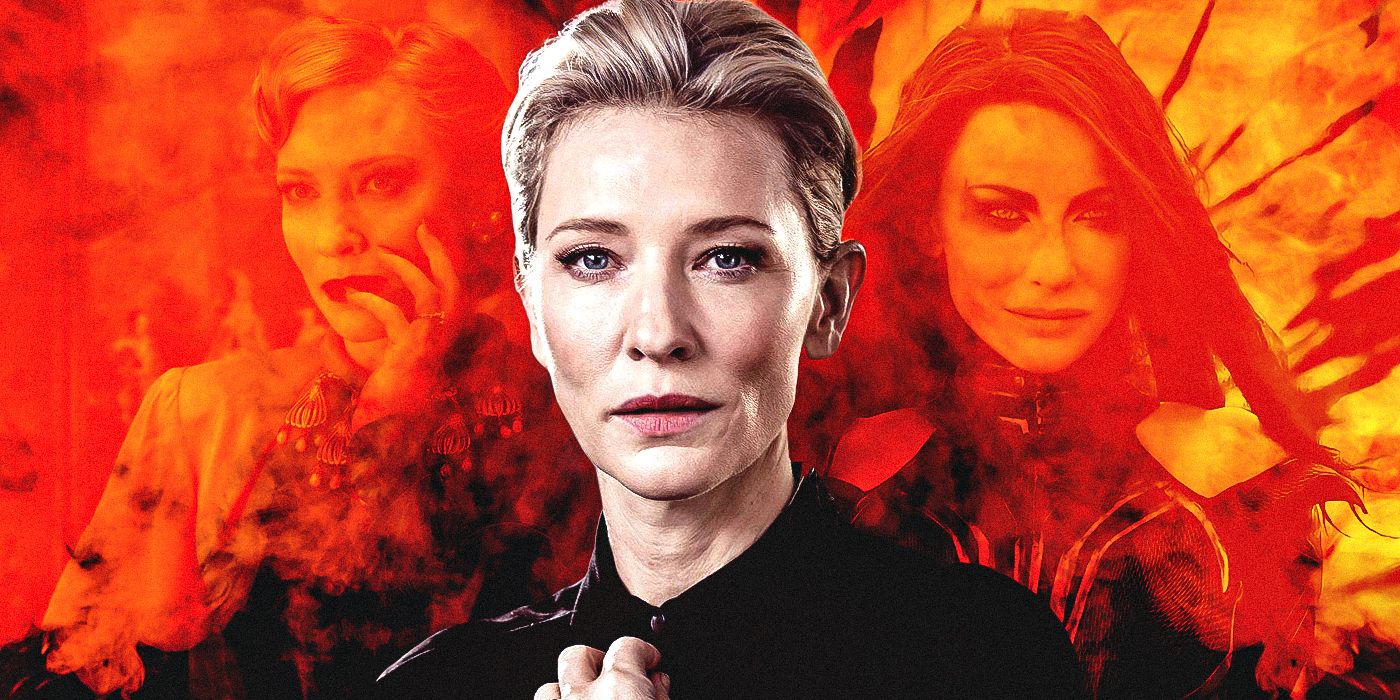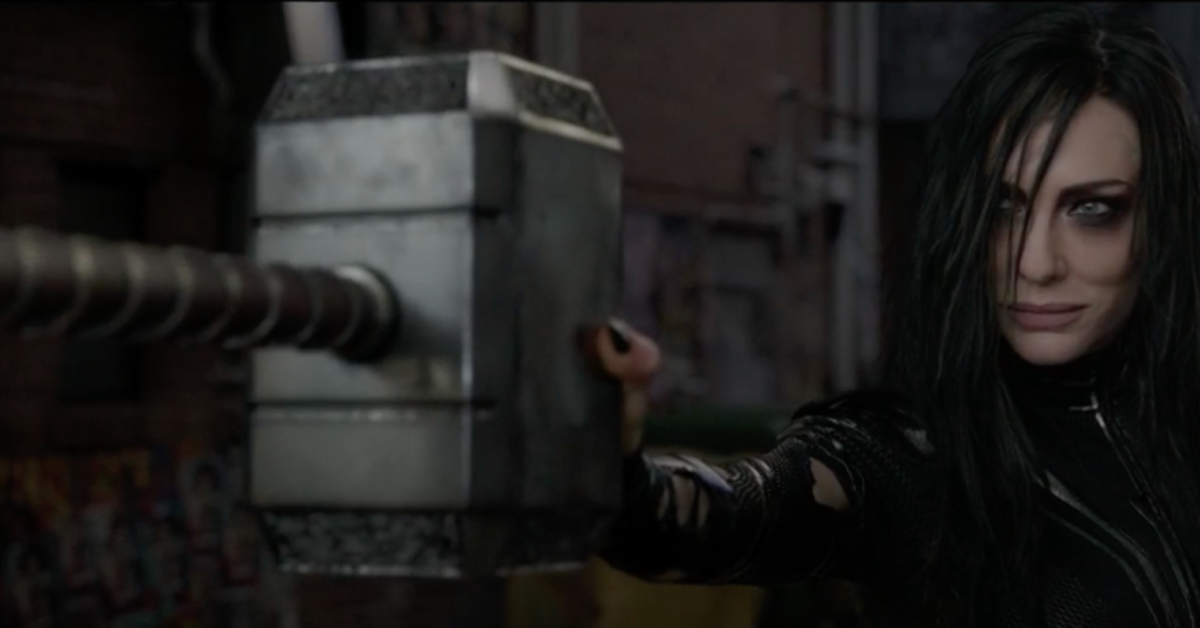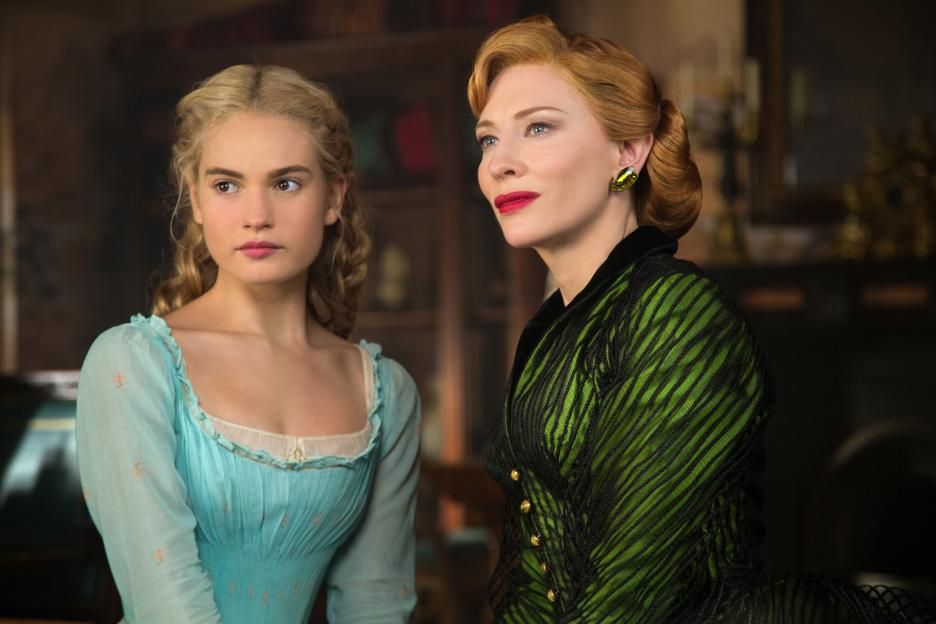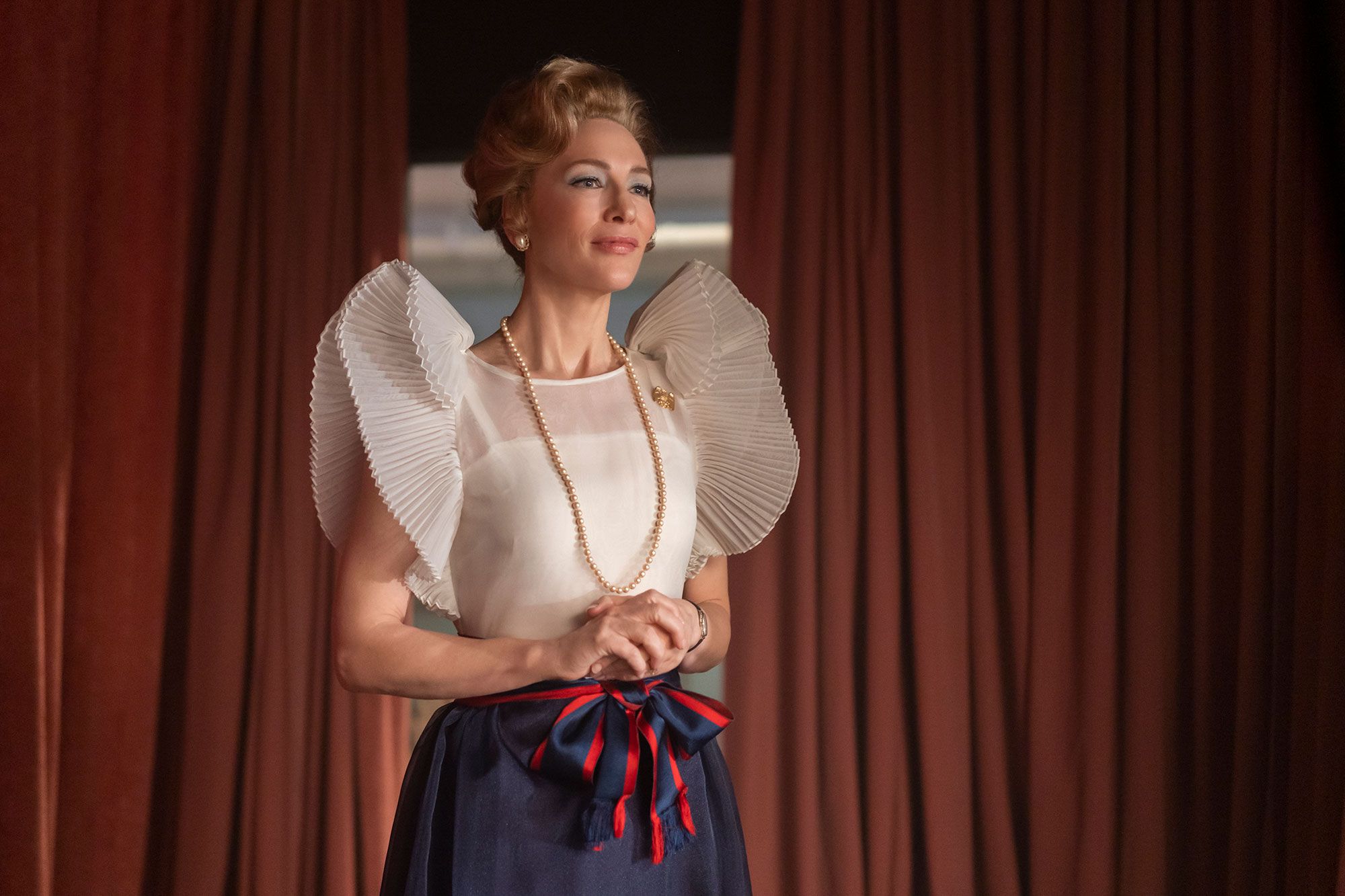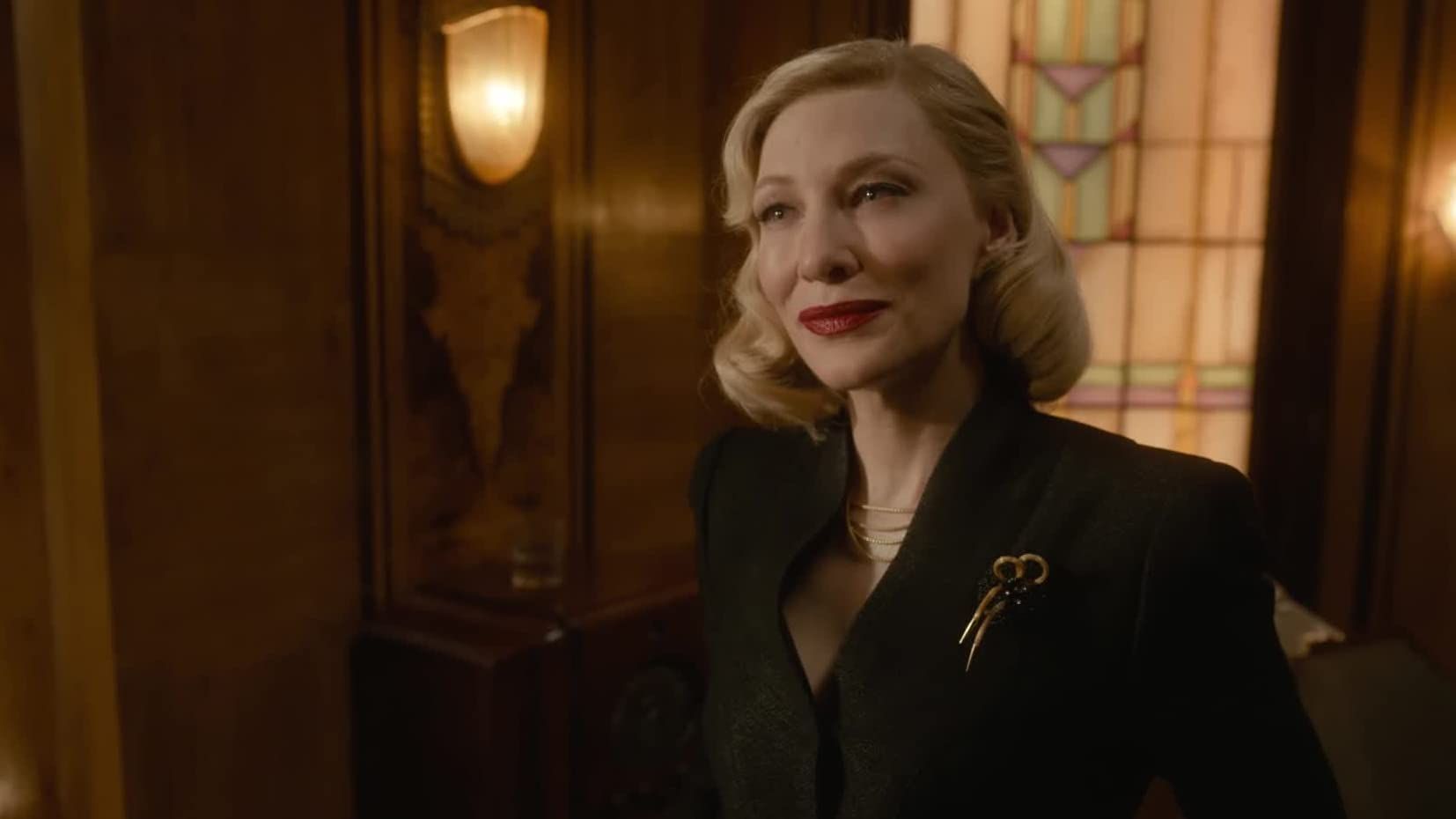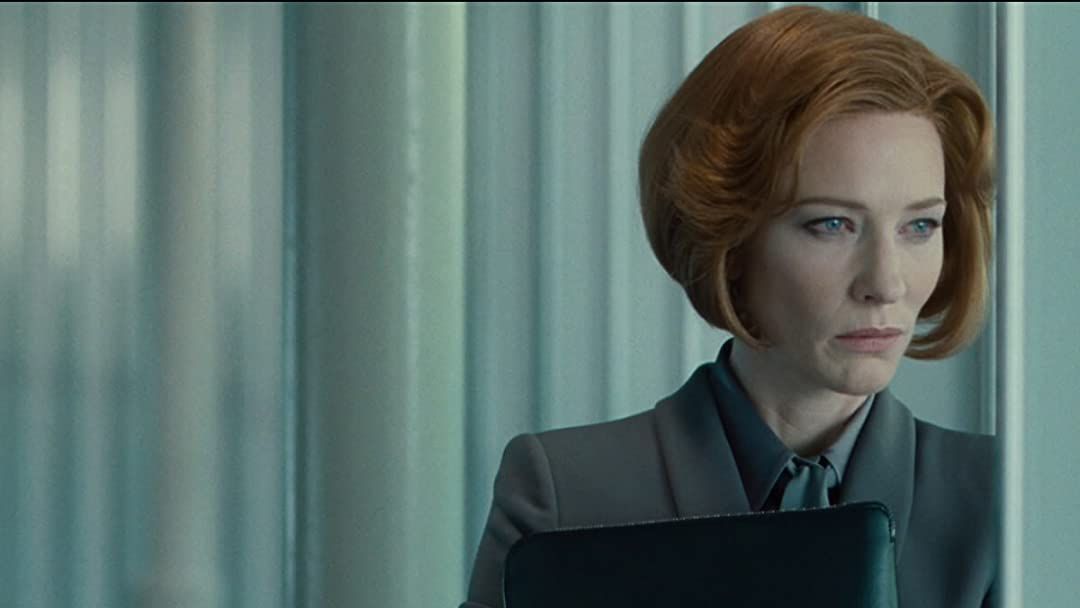An Academy Award and BAFTA winner, Aussie actress Cate Blanchett has created countless iconic characters. Nuance is an essential element to her performances, permeating each role with humanity — when she needs it. Blanchett’s fine-tuned craft becomes especially important when she takes on the role of an antagonist. Courageous as she was as the British monarch in Elizabeth, she was a far more wicked, very campy queen in Thor: Ragnarok.
In Nightmare Alley, as Dr. Lilith Ritter, Blanchett left behind any campiness for something darker and more ambiguous. A smile from Dr. Ritter didn’t give a hint as to what was happening in her head. Whatever she was thinking, it wasn’t good. Blanchett clearly delights in playing with the moral shades, or rather immoral shades to the following characters. When she takes on the villain role, she can be downright frightening.
5. Hela (Thor: Ragnarok)
Thor: Ragnarok was a departure from the tried-and-true MCU films that preceded it. Thor (Chris Hemsworth) was allowed to have more fun, with director Taika Waititi providing his personal stamp of humor to the script. This was also the first MCU film to feature a leading female villain. Suited with dark eyeshadow and a spiked headdress, Hela (Blanchett) banishes Thor to the planet of Sakaar, with plans to unleash catastrophe on Asgard.
As the first female Marvel villain, it’s frustrating Hela isn’t given a lot to do. Mainly it’s to toss Thor aside, so he can find his way back, separating herself from the heroes until the finale. Compared to how energized the film is in reinventing him, Hela “the Goddess of Death” gets the short end of the stick. Her master plan is grand scheming for the sake of it. She couldn’t be too powerful (that was for Josh Brolin’s Thanos). Hela’s reign of destruction lasts for one film, and it’s an easy defeat. Despite all that, Blanchett clearly delights in the absolute, excessive darkness of the goddess. Ciara Wardlow words it best in an article for The Hollywood Reporter: “Hela might not rank among the great cinematic villains of our time, but she’s undeniably good at what she does. She promises destruction and she follows through.”
4. Lady Tremaine (Cinderella)
Kenneth Branagh’s live-action reimagining of the Cinderella fairy tale was the breakthrough role for actress Lily James. As the kind-hearted Ella, she wants a life so much better than what she has been stuck with. It might just be possible with a chance encounter with a prince. But her stepmother, Lady Tremaine (Blanchett), will do everything in her power to put a stop to that. With the help of some friendly mice and a fairy godmother (Helena Bonham Carter), Ella tries to secure her happily ever after.
While she doesn’t get to sing like James, Blanchett hams it up in this updated Disney classic. Lady Tremaine is as colorful as the gowns she wears. At a dinner party, her cackle is more awkward than nefarious. The jealousy and hatred Lady Tremaine holds against Ella is cruel but in the end, it doesn’t come so much from a wicked place as a pitiable one. When Ella becomes Cinderella and has a royal future to look forward to, she forgives her stepfamily for all they’ve done. The selfless act devastates Lady Tremaine, causing her to crumble to the ground. Blanchett’s devious performance made audiences wish for a harsher punishment. In the Sydney Morning Herald, Branagh stated, “People wanted scenes where the stepmother was definitively stripped of her wealth and seen begging on the streets.” In keeping true to the Disney roots over that of the Brothers Grimm, the film had a fitting end to Lady Tremaine.
3. Phyllis Schlafly (Mrs. America)
The 1970s was a decade of enormous promise and change in the United States. In this Hulu limited series, important female figures are given a focus as the trajectory of the Equal Rights Amendment is shaped. Second-wave feminists Gloria Steinem (Rose Byrne), Betty Friedan (Tracey Ullman), Shirley Chisholm (Uzo Aduba) and others face an uphill battle to get the amendment ratified. The surprise backlash brought forth by conservative activist Phyllis Schlafly (Blanchett) led to the American political landscape being altered. Its repercussions can still be seen today.
Without knowing all the answers, Schlafly has a response for everything, even if she has to make up a legal case to keep the conversation going her way. Blanchett has complete confidence in her role, even while the facade begins to show cracks. In order to better herself, Schlafly practically denounces her own struggles as a woman in order to find a route within a male-dominated environment. Combining factual info and historical fiction, Blanchett treats the role as something tragic rather than a caricature. It’s pretty clear by the end that the power Schlafly desperately craved might have been achieved if she was on the other side of history. The very last shot of Blanchett is both symbolic and a showcase in the micro expressions the actress can expertly deliver with ease.
2. Dr. Lilith Ritter (Nightmare Alley)
In this remake of a 1947 film of the same name, director Guillermo del Toro brings to life a slice of 1940s Americana, both the good and the bad. Starting in the colorful world of a carnival, Stan Carlisle (Bradley Cooper) finds the perfect escape from a life he wishes to forget entirely. He creates relationships with the various carny folk, and finds love with Molly (Rooney Mara). When he makes the move to the city, Stan uses his carny background to become a conman. But in making a partnership with Dr. Lilith Ritter (Blanchett), he underestimates how far she will go to be successful.
Lady Tremaine might have had a cat named Lucifer, but the closer incarnation of darkness was here as the appropriately named Lilith. Taking on the icy blonde femme fatale of film noir, Blanchett is ruthless and manipulative. She has no otherworldly powers like Hela, she is no public figure like Schlafly, Dr. Ritter is someone who can slip into the shadows after leaving chaos behind. Ritter’s office is where Stan’s deal with the devil is made. The setting is elegant, with such grand windows and yet not much light slipping in. Deep shadows take over most of the space. The jars of deformed fetuses from the carnival are unsettling but the moment Stan enters Ritter’s office, full of defiance, something doesn’t feel right. With each new compartment, another new piece of the woman is revealed. Of course, it was specifically designed that way. If a setting could talk, Dr. Ritter’s office would be full of pain and destruction.
1. Marissa Wiegler (Hanna)
Erik Heller (Eric Bana) trains young Hanna (Saoirse Ronan) into becoming an expert assassin. Living in the wilderness, the day comes when Hanna is ready to confront CIA agent Marissa Wiegler (Blanchett). A collision course is set, and the survival of all three is no longer possible.
Marissa Wiegler has it all in what makes a great villain. She’s odd, brushing her teeth so rigorously, it makes her gums bleed. At times, she’s nervous, uncertain about her survival. During a moment when Heller storms into her hotel room and the attack takes Marissa by surprise, she literally has to tell herself to get back on her feet and escape. What she remains certain of is her determination to execute Hanna.
Part of why Blanchett and Wiegler go so well together, was that it was destined for them to be one and the same. In a 10-year anniversary retrospective with Focus Features, screenwriter Seth Lochhead revealed, “At the time, I thought she would be the best actress for the role. When I heard she had been cast for the part, it was mind-blowing — as was meeting her.” Wearing a wardrobe consisting of emerald-green tones, Wiegler is not the man behind the curtain from The Wizard of Oz, but the Wicked Witch. From the Brothers Grimm-like shack Hanna grew up in, to the wolf jaws of an amusement park Marissa exits, this action thriller is full of dark fantasy and fairy tale imagery. While Lady Tremaine would lock a young girl in the attic, Marissa Wiegler would prioritize the girl’s death.

